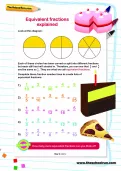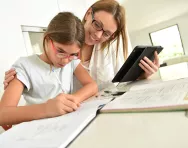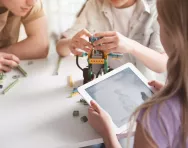Important update from TheSchoolRun
For the past 13 years, TheSchoolRun has been run by a small team of mums working from home, dedicated to providing quality educational resources to primary school parents. Unfortunately, rising supplier costs and falling revenue have made it impossible for us to continue operating, and we’ve had to make the difficult decision to close. The good news: We’ve arranged for another educational provider to take over many of our resources. These will be hosted on a new portal, where the content will be updated and expanded to support your child’s learning.
What this means for subscribers:
- Your subscription is still active, and for now, you can keep using the website as normal — just log in with your usual details to access all our articles and resources*.
- In a few months, all resources will move to the new portal. You’ll continue to have access there until your subscription ends. We’ll send you full details nearer the time.
- As a thank you for your support, we’ll also be sending you 16 primary school eBooks (worth £108.84) to download and keep.
A few changes to be aware of:
- The Learning Journey weekly email has ended, but your child’s plan will still be updated on your dashboard each Monday. Just log in to see the recommended worksheets.
- The 11+ weekly emails have now ended. We sent you all the remaining emails in the series at the end of March — please check your inbox (and spam folder) if you haven’t seen them. You can also follow the full programme here: 11+ Learning Journey.
If you have any questions, please contact us at [email protected]. Thank you for being part of our journey it’s been a privilege to support your family’s learning.
*If you need to reset your password, it will still work as usual. Please check your spam folder if the reset email doesn’t appear in your inbox.
How to create your child’s ‘classroom at home’

As children progress through primary school and, later, embark on their secondary school journey, homework and revision become a bigger part of life.
One of the ways we can help our children is by setting up an environment that’ll support their work at home.
Having a good workspace is also important if your child is home educated.
How you’ll do this will depend on a variety of factors: the space you have available, the types of work set, whether your child will be sharing it with siblings or adults who work from home, and how your child learns best, to name a few.
But here are some ideas for setting up your child’s ‘classroom’ so they’re ready for home learning.
Choose where your child will work
For children of primary age, it’s probably best to set up their homework area in a place where you can oversee them, such as the kitchen table, although upper Key Stage 2 pupils who have desk space in their bedroom may be able to work independently.
‘A light and spacious environment is a good idea,’ says mum Georgia Handley – so if you can, station your child’s study area near a window for natural light and fresh air.


Boost your child's maths & English skills!
- Follow a weekly programme
- Maths & English resources
- Keeps your child's learning on track
Sitting comfortably?
Think about your child’s chair. Ideally, they’ll be able to sit comfortably with their feet flat on the floor, but that probably won’t be possible if they’re at the kitchen table and have little legs!
Try to make them comfy using cushions if need be, so they’re not constantly fidgeting – or if you have an office chair, you could adjust the height to suit them.
Get rid of distractions
That means no tablet by your child’s side, unless they’re using it for work, no TV to distract them, maybe even no pets in the room! Put away their mobile phone, too, if they have one: we all know how hard it is to ignore the ‘ping!’ of a new message.
Remember, though, that your child is used to working in a busy classroom, so you don’t need to shroud them in complete silence.
Some children might even find homework easier with a bit of background noise, like a radio on quietly or some gentle music.
Have all their learning kit to hand
It’s very easy for kids to use sharpening their pencils or going to find a ruler as an excuse to wander off (and forget to come back!) so before they start their homework, make sure they have all the equipment they need, including stationery and books.
If your child is using a tablet or laptop, have their chargers at their work station, too, and make sure they have the login details for any websites or apps that they might need.
Stay organised
Use magazine files, in trays, pencil cases or just an empty shoebox to organise your child’s paper-based work and stationery.
This will help them to lay their hands easily on the book, worksheet or protractor they need, as well as stopping their learning materials encroaching on family space.
Use visuals
Having your child's homework diary or timetable on your child’s desk or stuck to the wall can help them see exactly what they should be doing at a glance. A visual timetable (where you use pictures of each activity as well as or instead of words) can be really helpful to establish a routine. You could also put a clock or watch on the table, or use a timer so your child can see how much time to spend on each task.
You might also want to stick up a free printable reward chart where your child can earn stickers and/or treats for each task they complete.
If they’re online learning…
Even if your child can work independently in their bedroom, if they’re going to be working online or using the internet for research, it’s worth considering setting up a laptop or computer station in a family area like the kitchen or dining room.
This means you can keep half an eye on what they’re doing, and make sure they’re not being distracted by games, messages and YouTube.
Be smart about snacks
After school, many children are hungry and thirsty, so before they start homework, give them something to eat and drink, like these brain-boosting snacks.
Make the most of all of your space
Give your child freedom to use different spaces as they tackle their home learning. For example, you could put blankets and cushions on an armchair in the living room to use as a comfy reading corner, giving them a break from table top work.
Keep it in perspective
Not all of us are lucky enough to have gardens, bedrooms equipped for learning, spacious kitchens with a family table, and home offices or studies, and so will struggle to create a dedicated learning space.
Keep in mind that your child's core learning happens at school, and home learning is there to consolidate their knowledge, so try not to get stressed if you can't provide a perfect workspace for your child. If need be, they can work on the sofa or on their bedroom floor.







